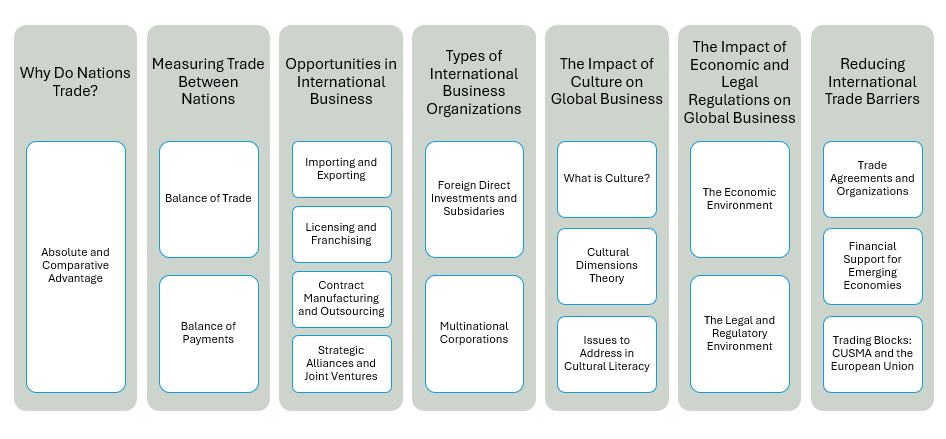Chapter Preview
Globalization refers to the economic and social integration between countries and the increased flow of goods, services, and people across borders.
Learning Objectives
After studying this chapter, you should be able to:
- Use the concepts of absolute and comparative advantage to explain why nations participate in international trade.
- NEW: Evaluate the economic impacts of the concepts of balance of trade and balance of payments on world trade.
- NEW: Distinguish between the various opportunities available to businesses operating internationally, including importing and exporting, licensing and franchising, contract manufacturing and outsourcing, strategic alliances, and joint ventures.
- NEW: Identify the characteristics of various types of international business organizations, including foreign direct investments, subsidiaries, mergers, and multinational companies.
- Use Hofestede’s Cultural Dimensions to describe how cultural differences between countries create challenges to successful business dealings.
- NEW: Recognize how economic and legal differences between countries create challenges to successful business dealings.
- Discuss the various initiatives designed to reduce international trade barriers and promote free trade.
This chapter is organized as follows:

